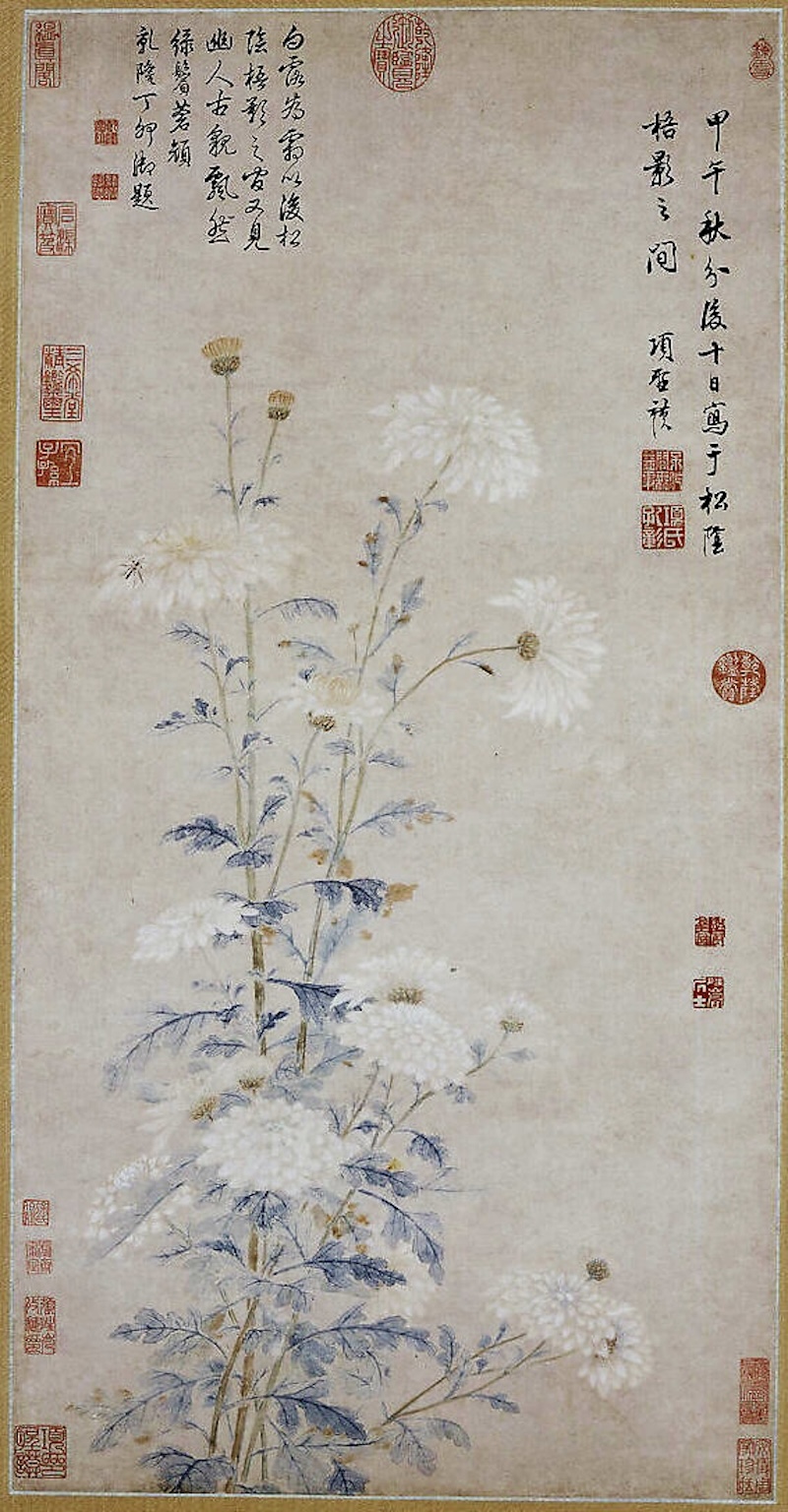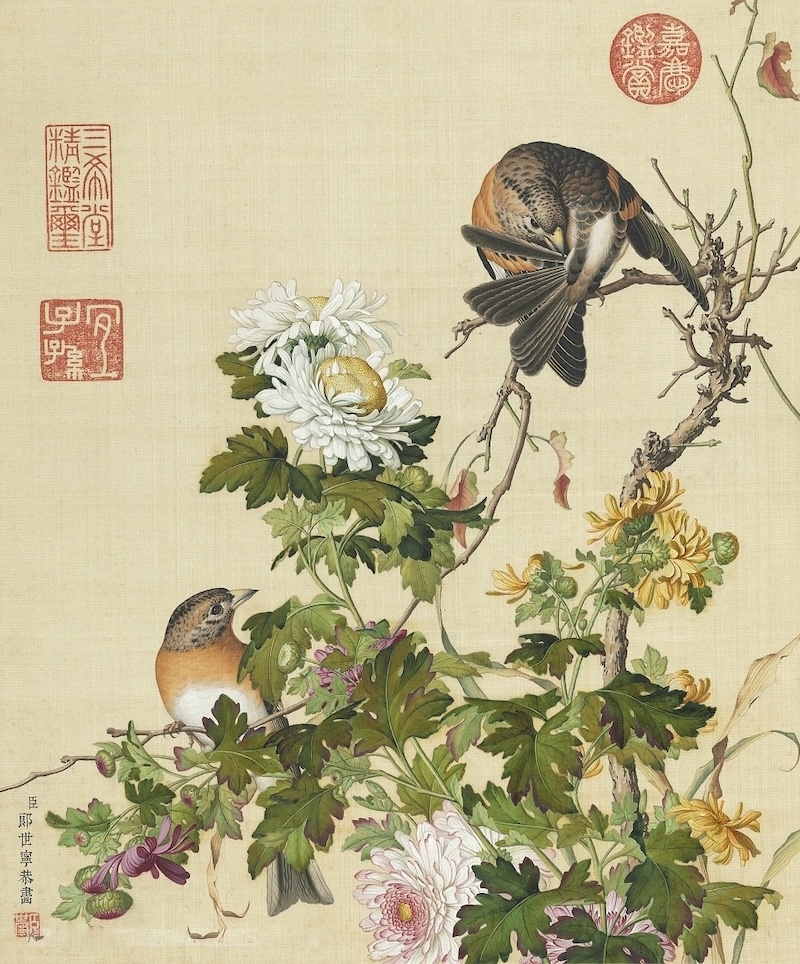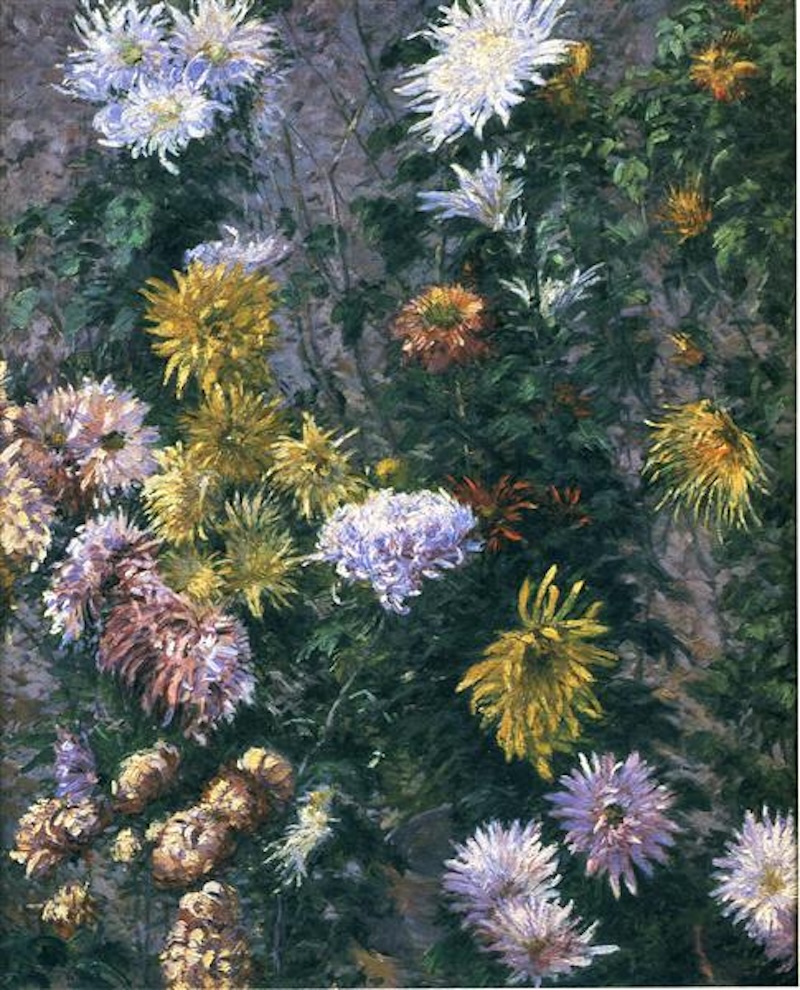The chrysanthemum was noted as early as the 15th Century BCE in China. The boiled roots of the plant were used in a remedy for headaches. Chrysanthemum sprouts and petals were included in salads and soups. The sweet odor and beautiful colors made the flower a popular component of garlands and bouquets. Since the chrysanthemum bloomed late when other flowers were fading, it became a popular fall flower. By 1630 CE, 500 cultivars had been created, and the estimated number of Chinese cultivars by 2014 was 7,000. More than 20,000 varieties of the chrysanthemum are recognized world-wide.
The chrysanthemum has been associated with fall for hundreds of years because it blooms in the cooler weather of fall and early winter when other flowers have faded or died. It also is associated with strength against harsh conditions. It is associated with longevity because it grows in abundance every year, fidelity and optimism because it returns year after year, and joy because it blooms in such a variety of colors.

“White Chrysanthemums” (1654)
Chinese poet Qu Yuan (340-278 BCE) was one of the first to write poetry about mums. In his poem “Li Sao” he wrote, “Drink dew from the magnolia in the morning and take autumn chrysanthemum’s falling petals as food in the evening.” Xiang Shengmo’s “White Chrysanthemums” (1654) (31”x15.5’’) (hanging scroll) illustrates the beauty of the flowers, leaves, stems, and buds of the mum. The upright strength of the mum is depicted in the composition. No stem breaks or bends, and buds branch out at all points.
Xiang Shengmo was born during the Qing dynasty (1644-1911), founded by the Manchus. Art and literature flourished during the period, but European art was beginning to influence traditional Eastern art. Xiang was fortunate to have grown up with his grandfather’s huge collection of historic Chinese painting and calligraphy.

“Chrysanthemums” (1723-35)
Lang Shining (1688-1766) was born Guiseppe de Castiglione in Milan, Italy. He entered the Society of Jesus (Jesuits) in Genoa at age 19. He remained a lay brother rather than becoming a priest. He worked in Lisbon for several years until Qianlong, the Emperor of China in the Qing dynasty, became interested in employing European Jesuits in China to train Chinese people in various fields, one of which was painting. Qianlong’s reign is considered to be the Golden Age of China. Castiglione reached Macau in August 1715 and Beijing a year later. He served the next three Qing emperors. He adopted the Chinese name Lang Shining.
Castiglione/Shining’s “Chrysanthemums” (1723-35) (silk with tempera) is one of hundreds of his paintings of flowers, birds, landscapes, battle scenes, and portraits. Shining uses the Chinese style of composition, the delicate balance between objects and empty space. His details of the flowers, leaves, and birds are more specific without being overwhelming. Shining used the technique of chiaroscuro, strong contrast between light and dark, to create depth, for example, in the rendering of the leaves from light to dark greens The white chrysanthemum petals are delineated with light gray paint. Shining mastered the difficult process of painting on silk with tempera, a water-based paint. With too much water, the color runs through the silk, and there is no way to save the work. He died in Beijing in 1766 and is buried there. His obituary was written by the Emperor Qianlong, and a stone monument was erected.

“Chrysanthemums in a Deep Ravine in China” (1840s)
The chrysanthemum arrived in Japan in the 5th Century CE, and the popularity of the plant spread throughout Japan, including royalty and commoners alike. The chrysanthemum was a symbol of autumn, harvest, longevity, rejuvenation, and good will. White chrysanthemums were used at funerals. Many families incorporated the chrysanthemum into their seals. The yellow chrysanthemum, the color of the sun, was adopted as the symbol of the Imperial family. It is used in the Imperial Seal of Japan, and the Japanese throne is known as the Chrysanthemum Throne. The Supreme Order of the Chrysanthemum is the highest honor the government can award.
“Chrysanthemums in a Deep Ravine in China” (1840s) is a woodcut print on a fan by the famous Japanese artist Utagawa Hiroshige (1797-1858). Hiroshige detailed the separate petals of the flowers, and they are large blossoms typical of the flowers cultivated in Japan. Hiroshige also includes a reference to a Japanese tale. The seated figure in the yellow box is a favored young attendant of the Emperor Mu Wang (1007-947 BCE) who was forced into exile by jealous rivals at court. Before the attendant was exiled, the Emperor taught his servant a Buddhist verse. It was said the young attendant wrote the verse on petals of chrysanthemums so he would not forget them. The petals became known as an elixir of eternal youth.

“White and Yellow Chrysanthemums in the Garden at Petit Gennevilliers” (1893)
Pierre Louis Blancard, a French merchant, brought chrysanthemums from China in 1688. Scottish botanist Robert Fortune brought 250 new varieties from China and Japan in 1846. The Chrysanthemum became a symbol of friendship and love in France, England, and America.
“White and Yellow Chrysanthemums in the Garden at Petit Gennevilliers” (1893) (29’’x34’’) was painted by Gustave Caillebotte. He and Claude Monet, both well-known painters, were great friends, drawn together by art and gardening. Caillebotte made six large, close-up paintings of chrysanthemums in 1893. The Victorians’ obsession with flowers led to the development of the language of flowers. White chrysanthemums, often included in funeral bouquets and wreaths, became associated with mourning. They also are associated with loyalty, honesty, and innocence. Golden yellow mums represent wealth, the sun, happiness, celebration, and longevity. Pink mums represent attraction and romance–red mums, love and passion. Violet mums were given to the ill, as a wish for return to health. Caillebotte delineates the individual petals, uses bright colors, and portrays sunlight light dancing across the canvas.

“Chrysanthemums in the Garden at Giverny” (1897) was painted by Caillebotte’s fellow flower and garden enthusiast Claude Monet. Monet’s obsession with waterlilies is well-known, but he also was drawn to Japanese woodcuts made by Hokusai and others, who did not use European perspective. This piece is one of several in Monet’s “Large Flower” series, through which he experimented with the Japanese style. Monet’s garden was his pride and joy, and he designed his garden by color and contrast. He does not delineate each petal in each flower, but paints just enough to let the viewer know the flowers are mums. The painting is a luscious riot of colors.
Beverly Hall Smith was a professor of art history for 40 years. Since retiring to Chestertown with her husband Kurt in 2014, she has taught art history classes at WC-ALL and the Institute of Adult Learning, Centreville. An artist, she sometimes exhibits work at River Arts. She also paints sets for the Garfield Theater in Chestertown.




Write a Letter to the Editor on this Article
We encourage readers to offer their point of view on this article by submitting the following form. Editing is sometimes necessary and is done at the discretion of the editorial staff.